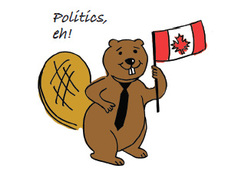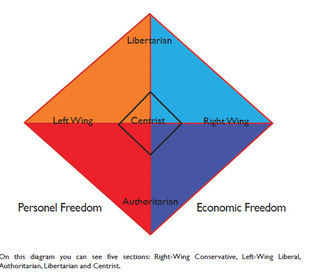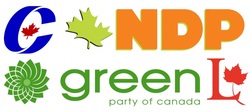
An Introduction to Canadian Politics
By: James Newman
Politics is a word you may have heard either from your parents, on the television, or even from your teachers at school; but have you ever wondered what it really means and exactly who is involved?
The word Politics is defined in the dictionary as, “The science or art of government and the practice or profession of conducting political affairs.” Therefore, politics is the general term used for the thoughts, ideas, rules and passing of laws in any country, city or community.
You may have also heard of terms like: party, left wing, centrist, right wing and so on. There are many aspects of the political system; for example, in Canada we have a political system that is considered Democratic, which means we have a group of people in our government who make decisions together based on public votes that are counted equally.
When we turn 18 we will be able to vote. As a citizen of a democratic country we have a responsibility to be informed about this subject and I will begin by explaining the political framework. I hope by the end of my four articles you will know a lot about politics!

The terms ‘right wing’ and ‘left wing’ get thrown around a lot in politics, but don’t get too excited, they have nothing to do with hockey. The political spectrum is a helpful tool where all of the different views and opinions on what should be done in the country are divided into groups.
The two major factors in the political spectrum are personal freedom otherwise known as Human Rights (rights to which a person is entitled to simply because she or he is a human being) and financial freedom (rights to having significant income and savings). The farther right someone is on the spectrum, the more he or she values financial freedom, and the farther left someone is, the more he or she values personal freedom. The higher someone is on the political spectrum the more freedom he or she wants overall and vice versa.
The people who fall under the Right-Wing section are often called Conservatives and tend to want fewer regulations on financial industries; allowing banks and other large corporations to manage themselves. For example if it was up to you and not your principal to decide what type of ball you brought to school, or what kind of clothes you were allowed to wear. Left-Wing Liberals vote for more personal freedom and choice, but want the government to have more influence on the economy. For example, if everyone was allowed to start their school day at a different time depending on where they lived - if you lived farther away you would start
later than someone who lived across the street. Authoritarians want the government to have more control over people’s personal choices in life and the economy. Libertarians prefer freedom both ways, giving people a lot of choice in their life and also giving some leeway for companies in terms of their decisions. Centrists attempt to combine Left and Right wing views to make a good combination of personal and financial freedoms, as if they were making a peanut butter and jam sandwich, rather than just using either jam or peanut butter alone.

Political Parties are groups of politicians that are approximately in the same area on the political spectrum. The political parties in Canada consist of the NDP (Left wing, leaning center) the Liberals (slightly left of center) the Conservatives (center right-libertarian) and multiple minor parties, such as the Green Party (pro-environment), the Bloc Quebecois (who focus on the protection of Quebec’s presence in Canadian government). The number of members of parliament (MPs) are represented by how many seats they occupy
of that particular party; the more seats a party has, the more power they have.
The NDP (New Democratic Party)
The NDP was initially Left wing, leaning towards authoritarian, but recently became slightly closer to the center of the spectrum. Their leader is Tom Mulcair, who replaced the late Jack Layton. Jack Layton, who was known for his charismatic personality, led the NDP as the official opposition for the first time. This means the NDP is the second biggest party in the parliament.
The Liberals
On the political spectrum the Liberal Party of Canada remains slightly left from the center and was always a major contender in elections, but recently lost much of its power to the Conservatives and the NDP. They currently do not have a permanent leader since their former leader, Michael Ignatieff, resigned after his defeat
in last year’s federal election; Bob Rae is currently their Interim Leader. The Liberals are the third largest party in parliament.
The Conservative Party of Canada
The Conservative Party of Canada is currently lead by Prime Minister Stephen Harper, and as you can tell by its leader’s title, the Conservative Party has won last year’s election by having the most candidates elected by Canadian citizens. The Conservatives currently have the majority in the government, meaning they have
the largest number of seats in parliament and have a great deal of authority over all political decisions. The conservatives are somewhat right wing, but also leaning Libertarian on the political spectrum. Most of their support comes from Western Canada.

 RSS Feed
RSS Feed